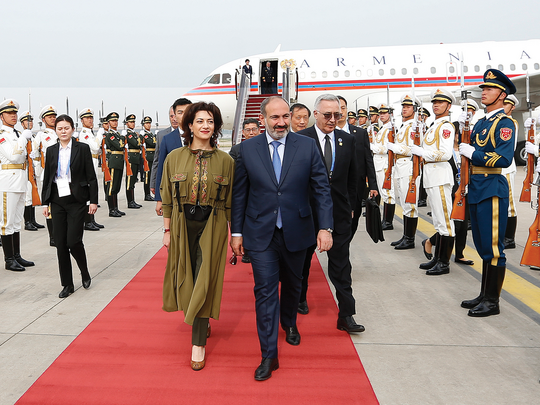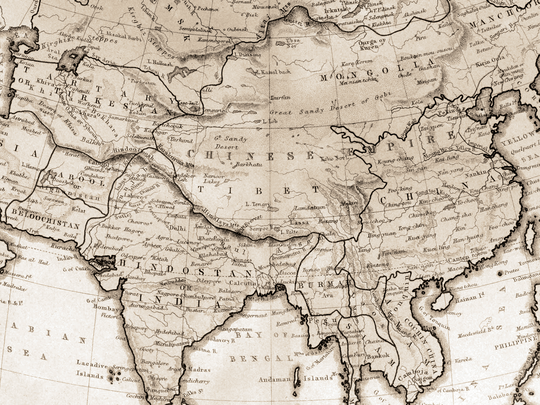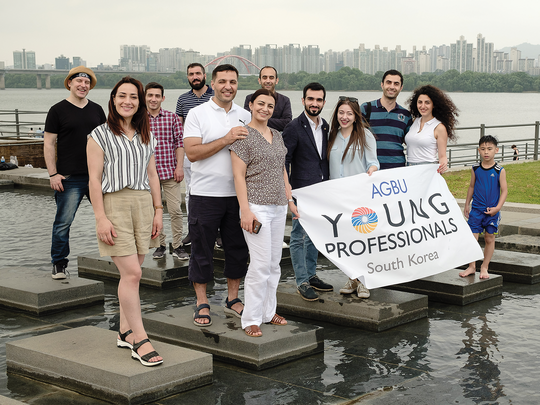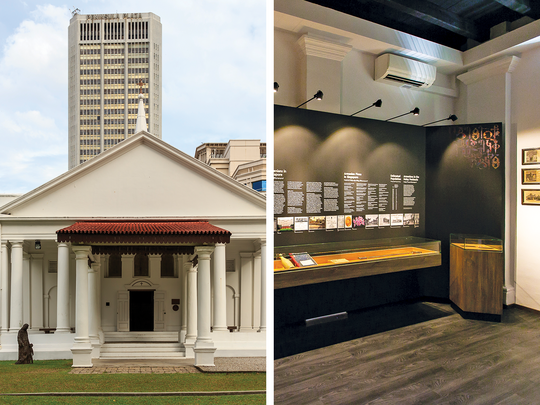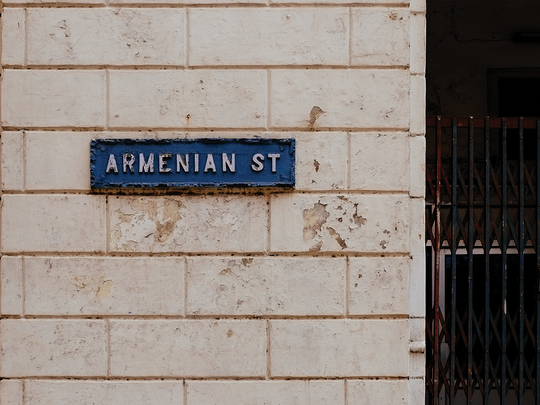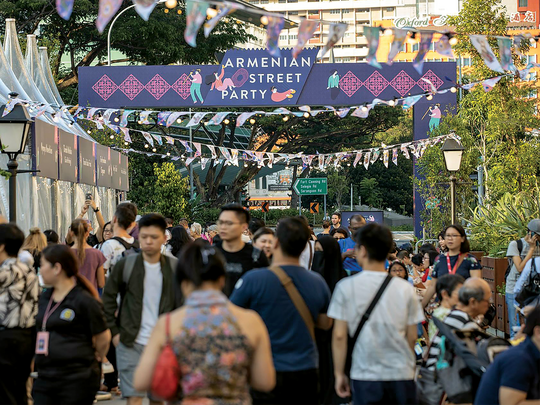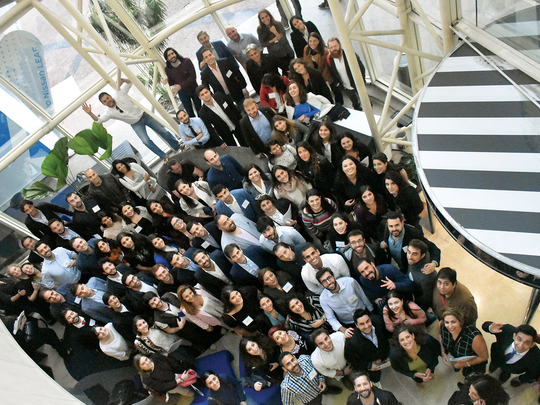Though heavy traffic runs through the Old City, just past the gates of the Armenian Apostolic Church of Holy Resurrection, the clamor and chaos of the Bangladeshi capital evaporate. A city of almost 19 million, Dhaka has no known, living Armenians, yet the heritage of an influential Armenian diaspora and a part of Bangladeshi history is rooted in the revival of its 238-year-old Armenian church.
“The Armenians of Dhaka were active in the social, political, and economic development of the city,” church caretaker Armen Arslanian notes. “The Armenians on this side of the world, those who immigrated throughout Southeast Asia, were not refugees. They were following the routes of business.” Arslanian himself was doing the same when he came to Bangladesh for the first time in 2008.
The child of Armenian Genocide survivors from Cilicia, he grew up in Argentina, and it was on a business trip to Dhaka that he strolled through Armanitola, Bangladesh’s Armenian Quarter, and found the Church of Holy Resurrection. In 2014, Arslanian inherited the post of church caretaker from Michael Joseph Martin, Dhaka’s “last Armenian” and a passionate man who had preserved and protected the Armenian Church since 1986, through some of Bangladesh’s most tumultuous years as a young democracy. Unlike Martin did during his tenure, Arslanian does not live in Dhaka but he visits the church every few weeks. Since becoming caretaker, he has made it his mission to redefine the ways in which the local community interacts with the church as both an active house of worship and a historic site.
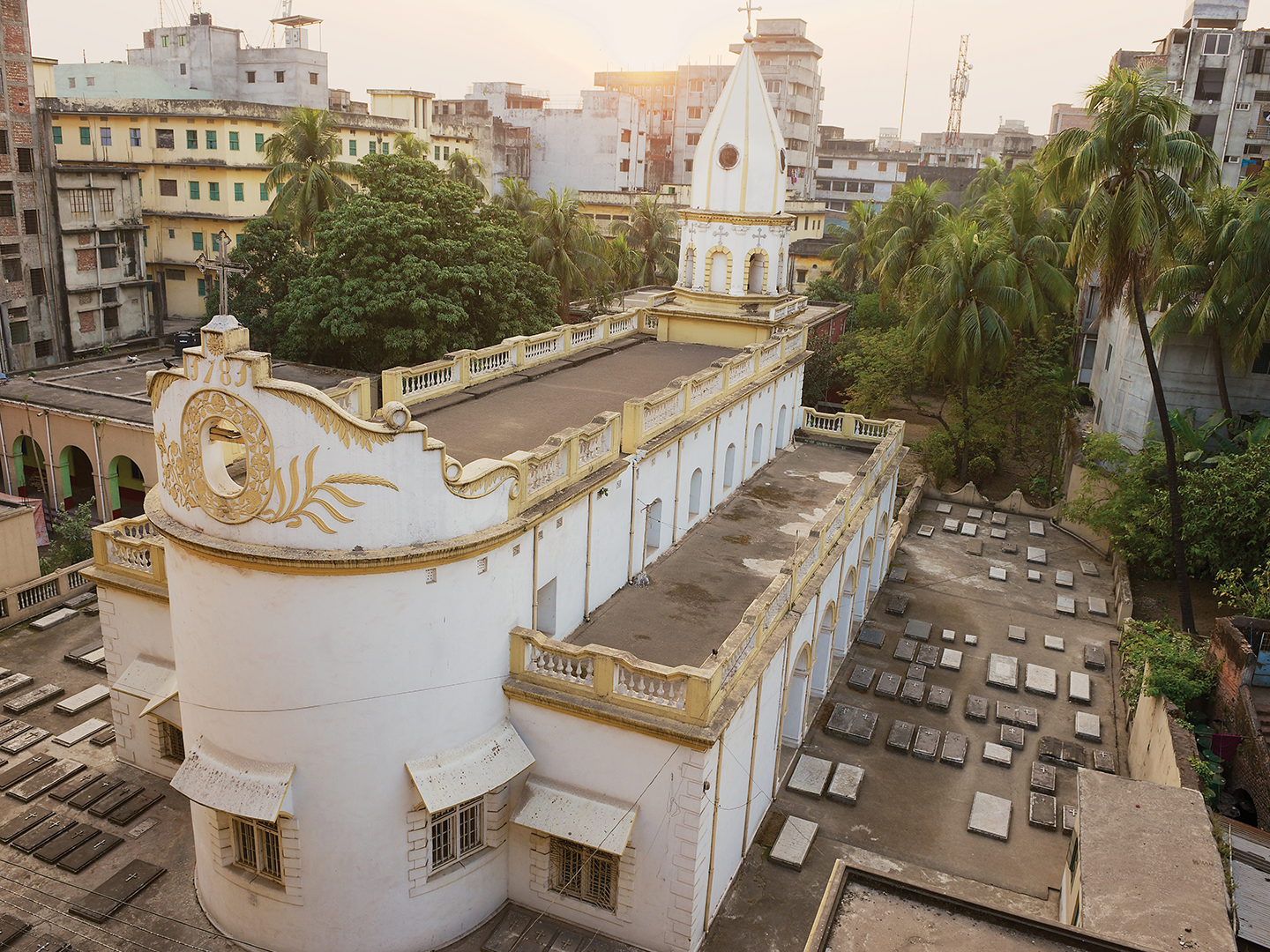
In Communion
“We have an unwavering commitment to the people of this land,” Arslanian explains.“Out of respect for the community, of which we are certainly a part, out of gratitude for the way our forefathers were welcomed to live in Dhaka, we are committed to sharing the resources we have.” As a thriving house of worship, the church is aligned with the Armenian Apostolic tradition of Etchmiadzin yet, Christians of all denominations are welcome and routinely hold services for their congregants. Catholics, Anglicans, and Protestants worship alongside one another, and even Muslims find a place of refuge to pray on church grounds. Because of its proximity to the Mitford Hospital, the church welcomes all in their time of need and it’s this vital integration into daily community life of which Arlsanian is most proud.
Out of respect for the community, of which we are certainly a part, out of gratitude for the way our forefathers were welcomed to live in Dhaka, we are committed to sharing the resources we have.
The Old City in which Armanitola is situated represents one of the poorer districts in the capital; food insecurity and lack of access to medical care are crippling problems for the Bangladeshis who neighbor the church. Recognizing that these are social ills that could be partially alleviated, Arslanian piloted the Mr. Michael Martin Food Assistance Program in honor of his predecessor. Initially devised as a monthly endeavor, the local demand transformed it into a weekly initiative in 2016. A Bangladeshi favorite, biryani, is prepared on the church grounds and served to 550 adults and 200 children weekly. Milk for younger children is also distributed. Like almost all else in the church, the initiative to bring these services to Armanitola is completely interfaith. From the Armenian Christians on the board of the church raising funds to the Muslim and Hindu church employees cooking and distributing food, everyone plays a role. In addition to food services, the church has begun a monthly medical clinic in partnership with local charitable organizations, bringing physicians to the community to provide vital care free of cost. Currently, the church board is trying to expand the clinic on a weekly schedule as well. To empower the youth in the community, the board is also working to create a robust scholarship program for the dedicated students of both the Armanitola Government High School and the Pogose Laboratory School and College—established as the first private school in Bangladesh by the Armenian merchant and zamindar (landowner) Nicolas Pogose in 1848.
“Through our church and our Christian faith, we hope to continue the legacy of our ancestors here,” Arslanian explains. The head of an impressive assembly of international Diaspora Armenians, he is joined on the church board by Haig and Hagop Didizian from the United Kingdom, Henri Arslanian from Hong Kong, and Pierre Hennes from Singapore. Despite the lack of an explicitly Armenian community in Dhaka, the church is profoundly connected to the Bangladeshi community, serving its neighbors more consistently than many other Armenian churches throughout the Diaspora. The goal of the food assistance programs, medical clinics, and academic scholarships is to empower people directly, without pretense nor prejudice. Some of the side benefits are the positive reputation and interest in Armenians by the Bangladeshi people.

Hearth of History
A monument to a bygone era and a testament of the unwavering faith of a community, the Armenian Apostolic Church of Holy Resurrection was built in 1781 in the then-thriving business district. The Armenians that would found a tight-knit community in Dhaka were already of a diaspora, descendents of Armenians deported from Old Julfa to the New Julfa of Isfahan, by the Safavid monarch Shah Abbas during the Safavid-Ottoman Wars of 1603-1605.
Negotiating their identities between empires for centuries, the Armenians of New Julfa established themselves as versatile merchants, skilled in the textile and silk trade. They would later engage in the trade of salt, betel nut, and saltpeter (used for gunpowder) but ultimately, they would become known for pioneering the jute trade. It was the burgeoning business in Dhaka that pulled them ever further east and, by the second half of the 17th century, their status as indispensable mediators made them valuable assets for the British Crown governing the region.
“Whenever 40 or more of the Armenian Nation shall become inhabitants in any of the Garrisons, Cities or Towns belonging to the Company in the East Indies, the said Armenians shall not only have and enjoy the free use and exercise of their Religion, but there shall also be allotted to them a parcel of Ground to erect a Church thereon…” reads the 1688 edict issued by the English East India Company, beckoning its Armenian traders to settle for business. Under the promise of safety and relative sovereignty, they did just that. In the late 18th century, when British private traders monopolized the textile business in the region, Armenians turned to landholding, acquiring real estate and becoming zamindars in Dhaka.
Popularizing tea-drinking and introducing Western-style “department stores” for European products in Bengal, Armenians integrated into Dhaka’s civic life while bolstering the local economy. Armenians also introduced the ticca-garry, or horse carriage, to the city, which would remain the main mode of transportation in Dhaka until the 1910s.
In 1781, the Armenian Church that now stands in Dhaka was completed, built upon the small chapel and cemetery that was in use since early Armenian settlement. With its impressive arches and ornate basilica, the church was almost certainly constructed by local Muslims and Hindus, though the primary architect remains unknown. The center of the Armenian community, the construction of the church is evidence that the once-nomadic Armenian traders found a home in Dhaka. So much so, that when floods, fires, and famine devastated the city in 1787, the wealthy Armenian zamindars took it upon themselves to feed thousands of their neighbors daily. People would come from all over Dhaka to Armanitola for help.

Developing a Dialogue for Diplomacy
“The story of our church, the story of the Armenians who lived in Dhaka and died in Dhaka—it’s not just Armenian history,” Arslanian asserts, “It’s Bangladeshi history.” Though the Armenians of Dhaka never numbered over 300 at one time, they left an indelible mark on the Bangladeshi capital. Not yet 50-years old, the People’s Republic of Bangladesh is now remembering a history to guide their future, looking to the past to incorporate the narratives of the many communities that once thrived on their land. To that end, the initiative to include the Armenian Apostolic Church of Holy Resurrection in UNESCO’s World Heritage List has been spearheaded by the Armenian Ambassador to India and Bangladesh Armen Martirosyan and the Church board. Meetings between Ambassador Martirosyan and Bangladesh’s cultural affairs minister Asaduzzaman Noor could mean that a once forgotten church in Dhaka is the diplomatic tie that two young democracies need to strengthen relations.
Banner photo by Sumon Yusuf


